 November 13, 2014 John E. Ross, KD8IDJ, Editor
| |||||||||
ARRL Seeks Input on Recommended VHF-UHF-Microwave Contest Rule Changes The recently formed "Ad Hoc Subcommittee on VHF and Above Revitalization" -- created by the ARRL Board of Directors' Programs and Services Committee (PSC) -- is seeking member input by December 15 on updating various aspects of the League's VHF-UHF-Microwave and EME contest program. In the subcommittee's solicitation for input, Chairman Kermit Carlson, W9XA, said members can help the work of the committee "by providing additional insights and ideas for our consideration."
He said operating in contests also helps the Amateur Radio Service increase its pool of skilled operators and can demonstrate more intense use of our allocations, "some of which may be under threat from ever-expanding commercial and consumer services." Subcommittee members have recommended one set of changes that would apply across all ARRL VHF-UHF-Microwave and EME contests. These include: 1. Removing the current prohibition on the use of amateur and non-amateur forms of assistance for all operator categories, with such use having no impact on entry category. 2. Removing the current prohibition on self-spotting for all operator categories. 3. Allowing single operators to transmit on more than one band at a time. "Unlike most HF contests, operating skill and knowledge of propagation may not be enough to find stations to work. You can't just point your antenna to Europe or Asia at the right time and find a ready supply of potential contacts," Carlson explained. "The less-predictable nature of VHF+ propagation and the necessarily higher-gain, narrow-beamwidth antennas used make finding someone to work largely a matter of chance. Indeed, most microwave contacts would never occur at all without the use of real-time coordination." Carlson said the League's current prohibitive stance toward assistance and self-spotting "is the most often-heard complaint about our VHF contest program." He said subcommittee members believe that removing those prohibitions "will foster greater participation and result in more contacts and a more positive experience for participants without impacting the existing challenge of actually completing contacts." Similarly, he continued, the present restriction of Single-Operator stations to one transmitted signal at a time precludes such activities as calling CQ on one band while soliciting or completing contacts using digital modes on another. "Such restriction constrains the number of potential contacts among participants while yielding no apparent benefit," he said. The full announcement details and explains the rationale behind the specific recommended rule changes. "You can help us by considering the potential impact of each proposal and sharing any specific observations about it," Carlson said. "We're not tallying votes; rather, we want to be sure we have considered all foreseeable results of the proposed changes." Carlson said that collective input from user groups would be more helpful and expedient than receiving multiple versions of the same position from individual group members. Submit comments prior to December 15, 2014. Only comments received through vhf-input@arrl.org will be assured of reaching all the members of the Subcommittee. "Amateur Radio Parity Act of 2014" Attracts More than a Dozen New Co-Sponsors The list of co-sponsors for the Amateur Radio Parity Act of 2014, H.R. 4969, has grown to 63. Sixteen new co-sponsors signed aboard as the 113th Congress re-convened for its final session before adjournment. ARRL Regulatory Information Manager Dan Henderson, N1ND, is urging ARRL members to keep in contact with their Congressional representatives and to encourage them to become co-sponsors to the bill.
A few more co-sponsors may still be in the wings. The current tally represents a considerable expansion of support from the number of US Representatives who had signed aboard as Congress adjourned prior to the mid-term elections. All 16 of the latest co-sponsors were re-elected on November 4. H.R. 4969, which was introduced in the US House of Representatives with bipartisan support in late June, would call on the FCC to apply the "reasonable accommodation" three-part test of the PRB-1 federal pre-emption policy to private land-use restrictions regarding antennas. The limited PRB-1 pre-emption currently applies only to state and municipal land-use ordinances. The FCC has indicated its reluctance to provide the same legal protections from private land-use agreements -- often called covenants, conditions, and restrictions or CC&Rs -- without direction from Congress. The League has opened a HR.4969 page. HR.4969 has been referred to the House Energy and Commerce Committee. Rep Greg Walden, W7EQI (R-OR), chairs that panel's Communications and Technology Subcommittee, which will consider the measure. FCC Reverses ALJ's Decision, Revokes Convicted Sex Offender's Ham Radio License The FCC has reversed the decision of an Administrative Law Judge (ALJ) who had ruled in 2010 that David Titus, KB7ILD, of Seattle, Washington, could keep his Amateur Radio license in the wake of his conviction for a sex-related crime 17 years earlier. In his March 9, 2010, Initial Decision, ALJ Richard L. Sippel determined that Titus "has been a law-abiding member of his community for many years" and, based on evidence that Titus and witnesses on his behalf had presented, ordered that Titus's amateur license not be revoked. Sippel also ruled that the FCC's Enforcement Bureau had failed to meet the burden of proof necessary for revocation. He determined that Titus had shown remorse and been rehabilitated, and that the Enforcement Bureau had presented no credible evidence to indicate that Titus should be categorized as a high-risk sex offender. In a November 5 Decision in the proceeding (EB Docket 07-13), the FCC reversed Sippel's decision.
The FCC also said Sippel should have given more weight to incidents in 2002 and 2004 that, while not resulting in conviction, "prompted the Seattle Police Department to raise Titus's assessed risk level from moderate to high." In January 2007 the FCC issued a show-cause Order and designated for hearing the issue of whether Titus was qualified to remain a licensee in light of a 1993 felony conviction for "communicating with a minor for immoral purposes." The Communications Act provides that the FCC may revoke any license, if conditions come to its attention that would have warranted a denial of the licensee's original application. The Commission has said in the past that felony convictions, "especially those involving sexual offenses involving children," raise questions regarding a licensee's character qualifications. Titus's General class license expired in 2009, and the FCC deferred action on his renewal application while the revocation proceeding was still in play. The FCC said that given "known risks of Amateur Radios in the hands of sex offenders, such misconduct is prima facie disqualifying, and has resulted in the loss of licenses in past cases." "In focusing on the impact of Titus's misconduct on his qualifications to hold an Amateur Radio license," the FCC concluded, "we would be remiss in our responsibilities as a licensing authority if we continue to authorize Titus to hold an Amateur Radio license that could be used to put him in contact with children." International Space Station Briefly "Ham-less" After Crew Members Return to Earth The only two radio amateurs on the International Space Station (ISS) were among three crew members who returned to Earth on November 10, and another ham-astronaut won't arrive on board the ISS until later this month. An exciting 2015 appears to be in store. NASA Flight Engineer Reid Wiseman, KF5LKT, and European Space Agency Astronaut Alexander Gerst, KF5ONO, joined Expedition 41 Commander and Russian Cosmonaut Max Suraev on the flight home this week. Traveling in a Soyuz space capsule, the trio touched down safely in Kazakhstan after some 6 months on the station. Wiseman and Gerst were active on Amateur Radio during their time in orbit, handling questions from curious Earthlings during Amateur Radio on the International Space Station (ARISS) educational contacts and, in Wiseman's case, his first ARRL Field Day in June -- an activity he discussed in a recent #askAstro YouTube post.
This was the first mission for both Wiseman and Gerst. While in space, the pair carried out a spacewalk to relocate a failed pump module and configure the station for upcoming additions. Wiseman completed a second spacewalk with fellow NASA astronaut Barry Wilmore, now the ISS Expedition 42 Commander. According to ARISS, there will be no US Operational Segment hams on the ISS until December 7, and the ARISS Russian team will conduct any school contacts in the interim. European Space Agency astronaut Samantha Cristoforetti, IZ0UDF, heads to the ISS on November 23. She will be the sole radio amateur on orbit until next March. That's when Cosmonauts Gennady Padalka, RN3DT, and Mikhail Kornienko, RN3BF -- both space veterans -- will arrive. A key research focus during Expedition 41 was human health management for long-duration space travel, as NASA and Roscosmos prepare for Kornienko and NASA Astronaut Scott Kelly to remain aboard the ISS for 1 year. Several call signs are available for use on the ISS. NASA astronauts use NA1SS, while Russian cosmonauts operate under RS0ISS. Other call signs include DP0ISS, OR4ISS, and IR0ISS, available for use by European Space Agency astronauts. UK telecoms regulator Ofcom recently issued the call sign GB1SS for assignment to UK space travelers while aboard the ISS. NASA Astronaut Kjell Lindgren, KO5MOS, and Japan Aerospace Exploration Agency (JAXA) Astronaut Kimiya Yui, KG5BPH, will head to the ISS next May. Astronauts Tim Kopra, KE5UDN, and Tim Peake, KG5BVI, will be part of a crew increment heading into space a year from now. Peake, who is from the UK, may use the GB1SS call sign.
British pop singer Sarah Brightman is currently scheduled to travel to the ISS in October 2015 for a 10-day visit as a fare-paying "spaceflight participant." Her website has adopted an otherworldly theme. While it is not known if she will participate in any Amateur Radio contacts during her short ISS stay, she apparently would be eligible to do so using GB1SS. ARISS has announced that the deadline is December 15 for schools and educational institutions and organizations -- formal and informal -- to submit proposals to host an Amateur Radio contact with an ISS crew member. ARISS is especially interested in arranging contact events that will draw large numbers of participants and integrate the radio contact into a well-developed educational plan. ARISS anticipates that the ham radio contacts between students and the space station will take place between May 1 and December 31, 2015. The ARRL website has more information. Contact ARISS with any questions or for additional information. NASA has posted more information on the International Space Station and its crews. W1AW Centennial Operations Heading South to Florida, Arkansas The ARRL Centennial W1AW portable operations taking place throughout 2014 from each of the 50 states are now in Mississippi and Rhode Island. They will transition at 0000 UTC on Wednesday, November 19 (the evening of November 18 in US time zones), to Florida (W1AW/4) and Arkansas (W1AW/5). So far during 2014, W1AW has visited each of the 50 states for at least 1 week, and by year's end W1AW will have been on the air from every state at least twice.
Working W1AW/x from each state is worth 5 points per mode/contact, even when working the same state during its second week of activity. To earn the "Worked all States with W1AW Award," work W1AW operating portable from all 50 states. (Working W1AW or W100AW in Connecticut does not count for Connecticut. Participants must work W1AW/1 in Connecticut.) A W1AW WAS certificate and plaque will be available. An ARRL Centennial QSO Party leader board shows participants how many points they have accumulated in the Centennial QSO Party and in the W1AW WAS operations. Log in using your Logbook of The World (LoTW) username and password, and your position will appear at the top of the leader boards. Results are updated daily, based on contacts entered into LoTW. ARRL "Red Badges" Will Be Back On the Air on Saturday, November 22 The next ARRL "Red Badges on the Air" activity will take place on Saturday, November 22 UTC (starting the evening of Friday, November 21, in US time zones). That's when holders of red ARRL name/call sign badges will once again be roaming the bands, offering yet another chance to boost your ARRL Centennial QSO Party total. There will be
one more Red Badges on the Air activity on New Year's Eve, Wednesday, December 31. ARRL officers, elected officials such as Director or Section Manager, as well as Headquarters staffers and volunteers, and other members of the ARRL family will take to the air en masse for both occasions. Contacts with red badge wearers are worth as much as 300 points per contact for working ARRL President Kay Craigie, N3KN. Many of the 200 or so holders of red badges will be on the air on November 22 and December 31, along with other ARRL appointees, VEs, and members. These events are considered activity days, not contests, and operation is permitted on all bands. Participants can call "CQ ARRL Centennial QSO Party" on phone or "CQ CENT" on CW or digital modes. While the focus is to encourage ARRL red badge holders to hand out Centennial QSO Party points, all activity is welcome, regardless of point value. ARRL members are worth at least one point in the Centennial QSO Party. Participants get credit for each band/mode contact, regardless of point value. ARRL Centennial QSO Party participants can use the leader board to determine how many points they have accumulated. As of November 13, 13,000 people have reached 1000 points in the QSO points Challenge, and 7000 ops have reached the 3000-point level. Read more. 4M Lunar Flyby Spacecraft Amateur Radio Payload Now in Silent Earth Orbit The Amateur Radio payload in the Manfred Memorial Moon Mission (4M) lunar flyby experiment has gone silent, but the spacecraft itself will likely be in Earth orbit for some time to come. "It is there for some thousands of years, I think, but it might also be ejected into heliocentric orbit if it passes close to the Moon, which is what some simulations show," said Ghislain Ruy, LX2RG, of Luxspace (LSE), the private company behind the 4M payload. Ruy said the 4M is orbiting Earth every 16.5 days. Ruy told ARRL that the 4M's Amateur Radio payload exhausted its batteries on November 10 after 438 hours of service -- four times more than Luxspace engineers had predicted. "It can be considered a huge success that opened new paths and made people think or even dream," he said.
On November 10 the battery voltage began dropping, and Rein Smit, W6SZ, in California, received the last signal at 0135 UT on November 11, when the battery voltage had fallen to 8.4 V. "Here at Luxspace, we have to thank you all for the reports, for the tracking, and we also hope that we provided you with the challenges you expected," Ruy posted to the Moon-Net list. "4M may possibly awaken from time to time if illumination becomes better. We shall now endeavor to prepare the next one." The Chinese Chang'e 5T-1 lunar mission payload that the 4M initially accompanied into space on a Long March 3C rocket already has been recovered. The 4M and Chang'e 5T-1 -- part of the China Lunar Exploration Program -- launched into space on October 23, with the 4M payload hitchhiking on the launch vehicle's third stage. Until early this week the Amateur Radio payload was transmitting a WSJT JT65B beacon and telemetry on 145.980 MHz, and it was only by chance that the 4M managed to attain Earth orbit on the return leg, rather than burn up in the atmosphere -- which had been its more likely fate. Read more. California Scientist-Ham On the Air from Antarctica's McMurdo Station, Ross Ice Shelf Ham radio is not the primary reason that Ron Flick, K6REF, is in Antarctica, but it's proving to be an enjoyable diversion to his scientific activities at McMurdo Station and the Ross Ice Shelf. He's put a few hundred contacts in the log since arriving late last month from California. Flick, an oceanographer with the California Department of Parks and Recreation, Division of Boating and Waterways, and colleagues are conducting ice vibration studies on the Ross Ice Shelf, sponsored by Scripps Institution of Oceanography. McMurdo is home to KC4USV, but Flick's initial experience at the station -- once he was able to locate the key to unlock the door -- was less than optimal.
"The view is spectacular!" he enthused. "After I plugged the radio into power and the Yagi, I was able to hear a few stations on the lower end of 20, but was not able to contact anyone. The Yagi is fixed in an east-west orientation." Flick subsequently learned that the Antarctic winds had shifted the Yagi's orientation. He'd been using 14.243 MHz -- the "usual" KC4USV frequency -- and 14.290 MHz, which he called "my personal favorite." He was also using 21.260 MHz, generally getting on the air around 2200 UTC for a few hours, depending upon his work schedule. According to the Scripps Institution of Oceanography, Amateur Radio operations are part of the outreach and education efforts of the "Dynamic Response of the Ross Ice Shelf to Wave-Induced Vibrations" expedition. Starting this week, Flick will be on the air as time and conditions permit as KC4/K6REF from Yesterday Camp near the International Date Line on the Ross Ice Shelf, running 100 W to dipole antennas. He hopes to be active for a few hours during the Antarctic afternoon and evening, starting at about 0300 UTC. He will be in the field until December 5. The US Antarctic Program has a webcam at McMurdo Station. Read more. -- Thanks to Joe Garza, AB6RM AMSAT Celebrates 40 Years in Space for AO-7 Saturday, November 15, will mark 40 years since the AMSAT-OSCAR 7 (AO-7) ham radio satellite went into space from Vandenberg Air Force Base in California. Special Event W7O will be on the air November 15-24 to commemorate the launch of AO-7, the oldest working Amateur Radio satellite. Satellite aficionado Patrick Stoddard, WD9EWK/VA7EWK, who secured W7O for the occasion, plans to work satellite passes during the special event from Arizona, including AO-7 passes. He also hopes to recruit other operators to participate in the celebration from other locations and on other bands, including HF.
AO-7 was the second so-called "Phase 2" Amateur Radio satellite that AMSAT-NA constructed and launched into low-Earth orbit. It remained in operation until a short circuit occurred in a battery in 1981. More than 20 years later, however, AO-7 unexpectedly returned to life, its 2 meter beacon showing up on 145.9775 MHz. AMSAT describes the Mode A/B bird as "semi-operational" and dependent upon its solar panels for a reliable power source; AO-7 works only as long as its solar panels are illuminated by sunlight. Satellite experts speculate that AO-7's resurrection occurred when the short circuit in the battery opened, allowing the solar cells to power the spacecraft. When the satellite goes into eclipse, it powers down. Since the satellite returned to the outerworld of the living, terrestrial users have enjoyed numerous contacts via AO-7. According to its operating plan, AO-7 switches to Mode B (70 centimeters up/2 meters down) at 0000 UTC. AO-7 has beacons on 29.502 MHz (used in conjunction with Mode A) and, nominally, on 145.972 MHz (used in conjunction with Mode B and Mode C -- low power Mode B). The 435.100 MHz beacon has an intermittent problem, switching between 400 mW and 10 mW. Stoddard said he would publish a schedule through a link on his WD9EWK QRZ.com entry. Contact Stoddard for more information. AMSAT has posted a series of photos documenting the early OSCAR years, including AO-7. Read more. -- Thanks to AMSAT-NA, AMSAT News Service Some CQ WPX Applications via LoTW Not Processed It has been determined that some CQ WPX Awards Program applications using ARRL's Logbook of The World (LoTW) were not properly processed, because the applications were inadvertently tagged as incomplete. If you used LoTW to apply for a WPX Award between mid-October and early November and have not yet received an e-mail acknowledgment, contact WPX Award Manager Steve Bolia, N8BJQ. The ARRL November Sweepstakes SSB is This Weekend "CQ SS, CQ SS!" Operators in the US and Canada will be exercising their vocal cords (or The action gets under way at 2100 UTC Saturday and runs through 0259 UTC Monday (Sunday evening in continental US time zones). Many operators hope to get a "Clean Sweep" by working stations in all 83 ARRL and Radio Amateurs of Canada (RAC) sections. AMSAT Invites Ideas and Suggestions for Next-Gen Satellites AMSAT has invited the Amateur Satellite community to submit ideas and suggestions for the next generation of AMSAT satellites. AMSAT Vice President-Engineering Jerry Buxton, N0JY, announced the plan at the 2014 AMSAT Space Symposium in Baltimore. AMSAT asked that ideas be based on the CubeSat platform, as "this is the standard through which we will look for launches in the foreseeable future," its announcement said.
"Within the bounds of the type of satellite it takes to achieve any of the various orbit opportunities, let's consider in those plans the possibility of developing a platform that can suit any and all orbits," Buxton said in reference to the last goal. Buxton pointed out that the purpose of the proposal is not just collecting suggestions. "Being an all-volunteer team," he said, "AMSAT needs your help in carrying out the idea." He asked that submissions be thorough. The deadline is May 30, 2015. Read more. -- Thanks to AMSAT News Service Past ARRL Connecticut SCM Victor L. Crawford, W1TYQ, SK Past ARRL Connecticut Section Communications Manager (SCM) Victor L. "Vic" Crawford, W1TYQ (ex-W8NUV, HZ3TYQ), of Rapid City, Michigan, died November 8. He was 94. An ARRL Life Member, Crawford served as Connecticut's SCM from 1957 until 1960, when he stepped down to work in the Middle East.
As HZ3TYQ from 1963 until 1976, Crawford made two DXpeditions each to what were then called the Saudi Arabian/Iraqi and Saudi Arabian/Kuwaiti Neutral Zones, 8Z4 and 8Z5. In 1961, he led an operation from the Saudi Arabian/Kuwaiti neutral zone (9K3TL/NZ), with Jack Laub, HB9TL, Roy Fleming, MP4BBD, and L.M. "Rundy" Rundlett, W3ZA/K4ZA. Crawford also operated from HZ1AB, using the phonetics "Hot Ziggety One American Boy." Don Karvonen, K8MFO, recalled that Crawford was known worldwide for his impeccable CW and top-notch operating. "I will always remember June 29, 1962, when, as a 16-year-old with a rag-tag station in Upper Michigan, I worked Vic from HZ1AB," Karvonen recounted. "I know I'm not alone in sharing lifelong respect for Vic, both as a top-notch operator and a world-class guy. We have lost one more from America's Greatest Generation." Read more. -- Thanks to The Daily DX and Hamgallery.com A Century of Amateur Radio and the ARRL After many years of political unrest in Myanmar that resulted in the banning of Amateur Radio, the country formerly known as Burma starting cracking the door open to hams in 1994. Following 3 years of negotiations with Myanmar officials and two small-scale DXpeditions to that country, Martti Laine, OH2BH, obtained permission for a For many years, interest in 10 GHz operation had been building, spurred on by the ARRL's 10 GHz contests. By the mid 1990s, many hams were heading to the mountaintops with their small dishes to operate at 10 GHz. Coastal hams with pleasure boats would often go offshore to operate from the rarer grids, but sometimes they would have to suspend operation, when seas became high enough to make dish-pointing from their bouncing boats almost impossible. Gate 1 of the long-awaited vanity call sign program finally opened on May 31, 1996, after many delays -- including a total federal government shutdown at the beginning of that year, because Congress could not pass a budget. Gate 1 accepted applications from former holders of expired and unused call signs and from hams asking for the call signs once held by now-deceased relatives. Gate 2 opened on September 23, 1996, for Amateur Extra class licensees to apply. An interesting juxtaposition of two "the old and the new" articles appeared in the September 1996 issue of QST. The first was an article explaining how the then-new Global Positioning System (GPS) works. The next article looked far into ham radio's past as it attempted to
explain the inexplicable mysteries of the Wouff-Hong and the Rettysnitch. The Wouff Hong and Rettysnitch were fictional tools that sprang from the imagination of "The Old Man" (Hiram Percy Maxim), to be used for punishing Amateur Radio operators who demonstrate poor operating practices. As the "It Seems to Us" editorial related in the October 1996 issue of QST, "August was ushered in by a sudden announcement of rewritten FCC rules governing human exposure to RF fields, creating a mountain of uncertainty and concern in the Amateur Radio community." The "Happenings" column in that issue provided more details. An article in the January 1997 issue of QST further explained how the new rules would affect hams. -- Al Brogdon, W1AB The K7RA Solar Update This was one of those confounding weeks, when the average daily sunspot number was down, while the average daily solar flux went up. Compared with the 7 days previous, the November 6-12 average daily sunspot number declined 10.7 points to 85, while average daily solar flux rose 11.5 points to 139.4.
The predicted planetary A index is 8 on November 13-15, 12 on November 16-18, 10 on November 19, 8 on November 20-21, 12 on November 22-24, 8 on November 25, and 5 on November 26-29. It then rises to a high of 22 on December 6, and again on December 26. This weekly "Solar Update" in The ARRL Letter is a preview of the "Propagation Bulletin" issued each Friday. The latest bulletin and an archive of past propagation bulletins is on the ARRL website. In Friday's bulletin, look for an updated forecast and reports from readers. Send me your reports and observations. Just Ahead in Radiosport
See the ARRL Contest Calendar for more information. Upcoming ARRL Section, State, and Division Conventions and Events
Find conventions and hamfests in your area. ARRL -- Your One-Stop Resource for
Subscribe to...
Free of charge to ARRL members... | |||||||||
 "Contest participation benefits both individual amateurs and the Amateur Radio Service as a whole," said Carlson, who is ARRL Central Division Vice Director. "Individual operators gain overall operating experience, increase their knowledge of band characteristics, test the results of changes in equipment, antennas and locations, and have incentive to add bands and modes to their station complement, all in the context of enjoyable, yet challenging, activities."
"Contest participation benefits both individual amateurs and the Amateur Radio Service as a whole," said Carlson, who is ARRL Central Division Vice Director. "Individual operators gain overall operating experience, increase their knowledge of band characteristics, test the results of changes in equipment, antennas and locations, and have incentive to add bands and modes to their station complement, all in the context of enjoyable, yet challenging, activities."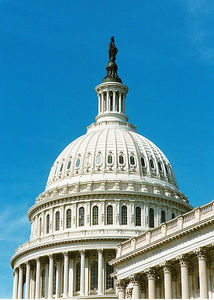 "We are excited about the addition of 16 new co-sponsors when Congress reconvened after the November mid-term elections," Henderson said. "Each new co-sponsor brings us one step closer to achieving our goal of getting HR 4969 enacted. We have a long way to go - but we are definitely moving in the right direction."
"We are excited about the addition of 16 new co-sponsors when Congress reconvened after the November mid-term elections," Henderson said. "Each new co-sponsor brings us one step closer to achieving our goal of getting HR 4969 enacted. We have a long way to go - but we are definitely moving in the right direction.".jpg) "We find that the ALJ erred in holding that the Enforcement Bureau failed to meet its burden of demonstrating that Titus is currently unqualified to remain a Commission licensee," the Decision said, "inasmuch as the ALJ failed to consider relevant convictions for sex offenses and failed to give appropriate deference to the judgment of local law enforcement authorities that Titus is a convicted sex offender who poses a high risk to the safety of the community."
"We find that the ALJ erred in holding that the Enforcement Bureau failed to meet its burden of demonstrating that Titus is currently unqualified to remain a Commission licensee," the Decision said, "inasmuch as the ALJ failed to consider relevant convictions for sex offenses and failed to give appropriate deference to the judgment of local law enforcement authorities that Titus is a convicted sex offender who poses a high risk to the safety of the community."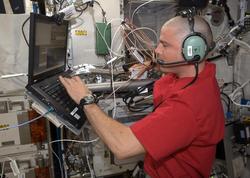
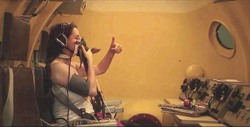
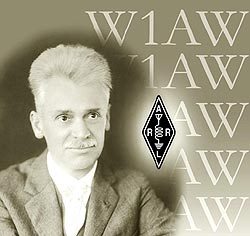 The
The .jpg)
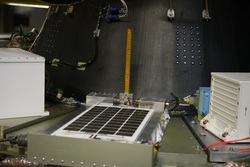
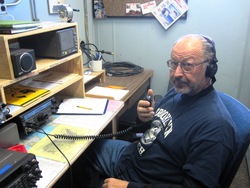
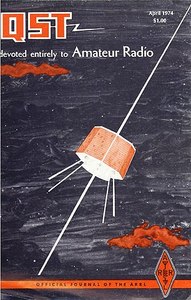
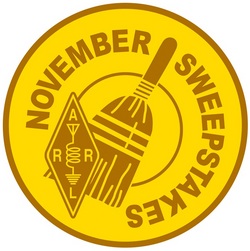 their digital voice memories) to compete in the 2014
their digital voice memories) to compete in the 2014 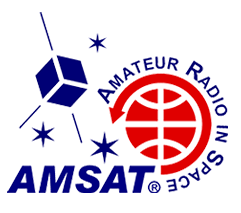 "The door is open for everyone to submit their ideas," Buxton said. "AMSAT Engineering has a long-term strategy, and this is the first step." He outlined the goals of that strategy:
"The door is open for everyone to submit their ideas," Buxton said. "AMSAT Engineering has a long-term strategy, and this is the first step." He outlined the goals of that strategy: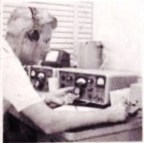
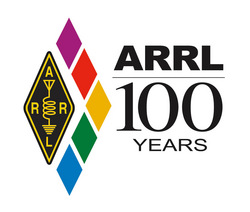 large-scale DXpedition that would demonstrate the value of ham radio to the government. A multinational ham team operating as XZ1A made many thousands of contacts and even operated in the CQ World Wide DX SSB contest. The article, "DXing from the Golden Land," published in the March 1996 issue of QST, told the fascinating story.
large-scale DXpedition that would demonstrate the value of ham radio to the government. A multinational ham team operating as XZ1A made many thousands of contacts and even operated in the CQ World Wide DX SSB contest. The article, "DXing from the Golden Land," published in the March 1996 issue of QST, told the fascinating story.
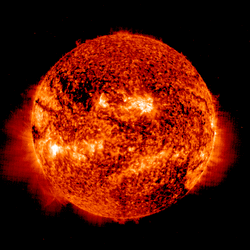 The latest prediction from the USAF/NOAA 45-day outlook has solar flux at 165 on November 13, 180 on November 14-15, then 180, 185, 190, and 195 on November 15-18, 200 on November 19-20, then 195, 190, and 170 on November 21-23, then 150, 135, and 125 on November 24-26, 105 on November 27-28, 100 on November 29-30, 90 on December 1-3, and bottoming out at 80 on December 5. It then rises to a short-term maximum of 200 on December 16-17.
The latest prediction from the USAF/NOAA 45-day outlook has solar flux at 165 on November 13, 180 on November 14-15, then 180, 185, 190, and 195 on November 15-18, 200 on November 19-20, then 195, 190, and 170 on November 21-23, then 150, 135, and 125 on November 24-26, 105 on November 27-28, 100 on November 29-30, 90 on December 1-3, and bottoming out at 80 on December 5. It then rises to a short-term maximum of 200 on December 16-17.







